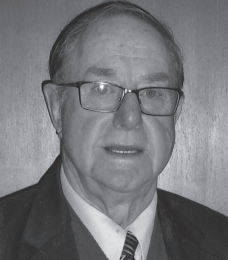 The retirement of Fred from Launceston’s Village Cinema 4 in 2014 brought to a close over 60 years of involvement with picture theatres in Victoria and Tasmania. His life in cinemas began in the late-1940s and early-1950s when his mother worked as a cleaner at Hoyts Southern Theatre at Hampton in Victoria. He had the full run of the theatre. On Saturdays he helped in the front-of-house, and with the cleaning before the intermediate session began.
The retirement of Fred from Launceston’s Village Cinema 4 in 2014 brought to a close over 60 years of involvement with picture theatres in Victoria and Tasmania. His life in cinemas began in the late-1940s and early-1950s when his mother worked as a cleaner at Hoyts Southern Theatre at Hampton in Victoria. He had the full run of the theatre. On Saturdays he helped in the front-of-house, and with the cleaning before the intermediate session began.
In 1954, Fred started as a Page Boy at the Regent and Plaza Theatres in Collins Street, Melbourne. The Regent was Hoyts’ flagship amongst the city theatres in Melbourne, and the pride of Reg Potter, Hoyts’ Metropolitan Supervisor. In March 1956, Reg Potter and Bert Morris of Hoyts’ Engineering Department placed Fred as Second Assistant Projectionist at the Esquire in Bourke Street, with Jack Perry and Harry Sinclair. Then, in April 1957, he was transferred to the Regent at Fitzroy, where he worked with Andy Evans and George Bull, and later he moved to the Victory at St. Kilda, the Lyceum in Bourke Street (in Melbourne city), and later still to the Capitol in Swanston Street, where he worked with Jack Mann and Roy Greer. The Capitol was well known as a combination theatre and office block, and for its spectacular ceiling, which was designed by Walter Burleigh Griffin.
The Capitol was the only theatre he worked at where the projection staff reached the bio box by way of a comfortable lift to the 5th floor. While working at the Capitol, Fred often did relief work at suburban theatres night sessions when staff members were off ill.
In 1960, Fred moved his family to Launceston in Tasmania, where he worked at the Plaza theatre as assistant to long time Launceston theatre identity Ted Matthews. The introduction of television to Northern Tasmania heralded the end of the
Plaza, so in March 1962, Fred joined the northern Tasmanian commercial television station TNT9, where he remained for the next 33 years in a variety of technical and production roles.
However, Fred did not sever his connection with the cinema industry. He had secured a Tasmanian Operators’ Licence, and did relieving work at Launceston’s surviving cinemas, the Majestic, the Tatler, the Star, and the Village Drive-In. He also
travelled further afield when needed, relieving at some north-west coast theatres and at the Devonport Drive-In.
When Hoyts relinquished the lease on Launceston’s Princess Theatre in 1970, it was taken over by the City Council to be converted to a live theatre. Fred entered into arrangements to run film shows at the Princess, as the Tatler Newsreel Theatre (renamed Cinema One) was the only survivor of the city theatres by this time, the Majestic and the Star having closed. Fred had purchased his own plant, and ran his film sessions successfully for a few years at the Princess when it
was not required for other uses.
With Fred’s assistance and his plant, the Circle of the former Star Theatre at Invermay became the venue for 35mm shows conducted for the Greek community and also for the University.
When Village built a twin in Brisbane Street (which was later extended to 4 auditoriums), Fred did relieving work there until he returned to full time work with Village in 1996. The introduction of digital projection in 2014 brought to a close a
career in the cinema industry which began at the time when Cinemascope and Magnetic 4 track sound first came in. Fred saw the replacement of carbon arcs with Xenon lamps, the need changeovers, and two projectors replaced by extended
spools, platters and automation, with Dolby and other digital sound systems becoming the norm.
The skills of the projectionist were not completely lost until the end of 35mm film, since film ads, trailers and features had to be made up for continuity, a projector threaded up for each show, and then programmed for presentation.
Fred’s career in the Industry is best described by words penned in 1932:- “The projectionist and the public never meet, but his work lives in every good performance.”
In retirement Fred expresses his grateful thanks to all the wonderful people he met and worked with, and who made his work in the Motion Picture Industry a pleasure.